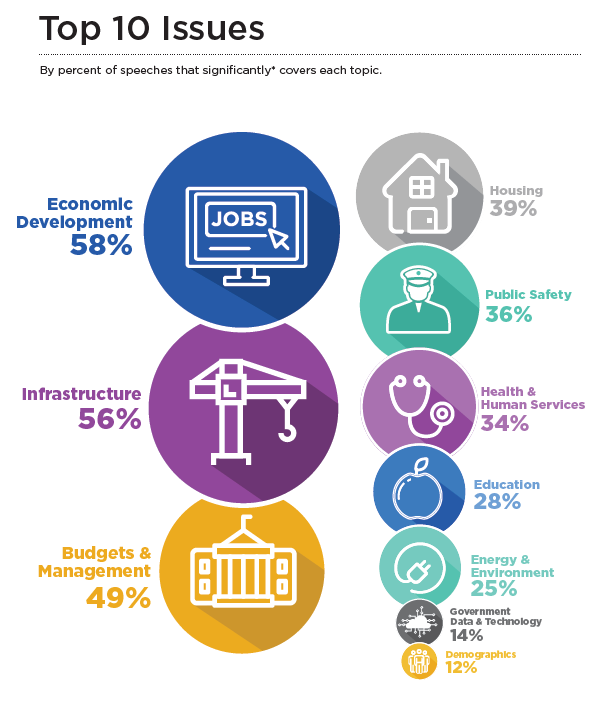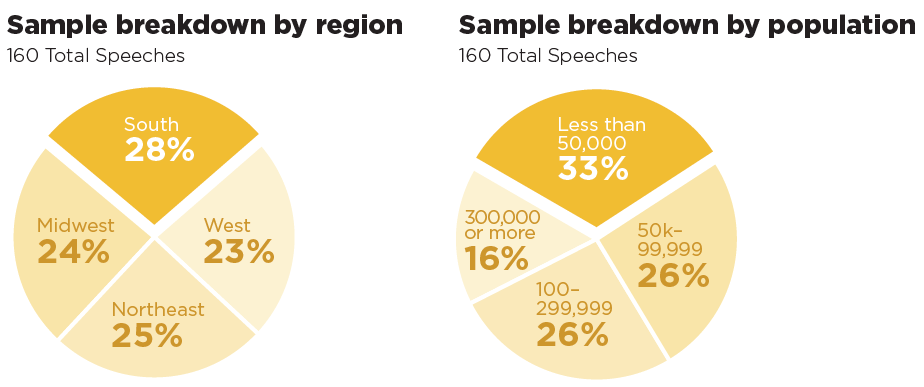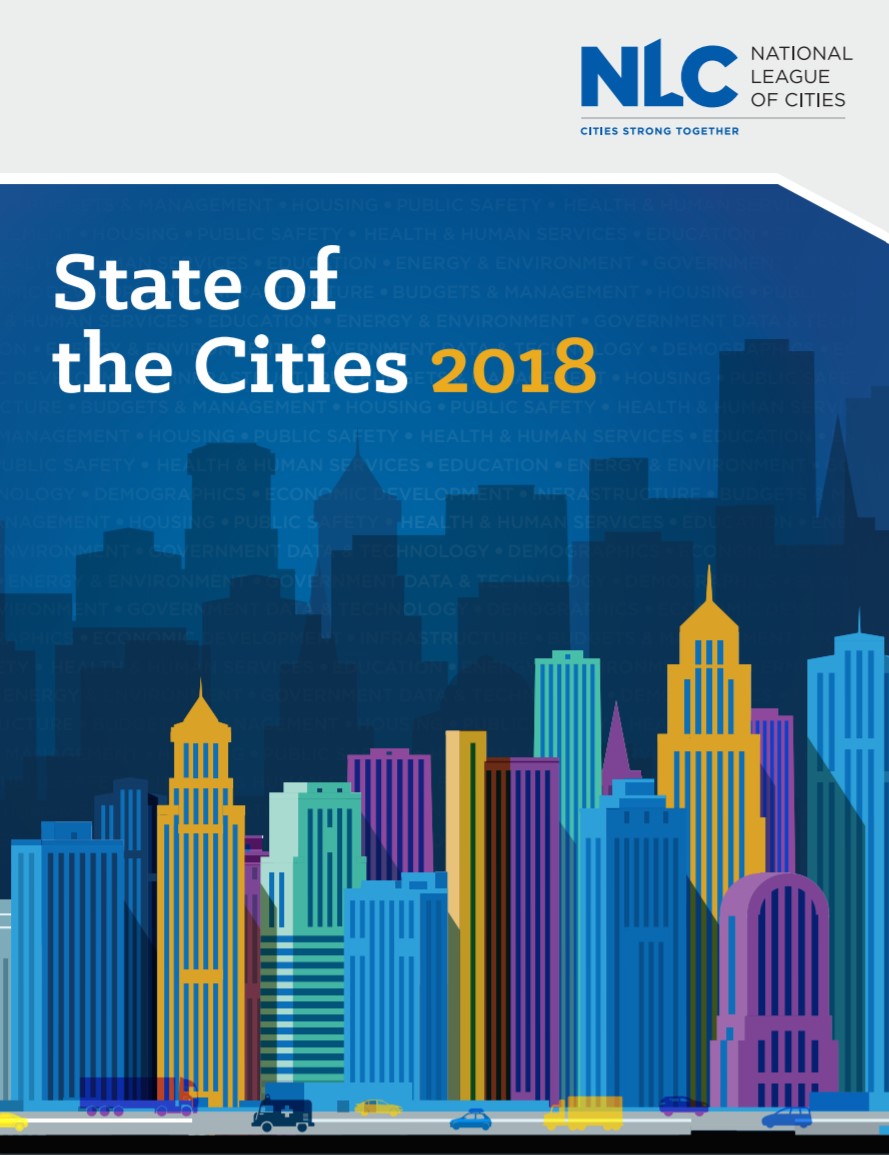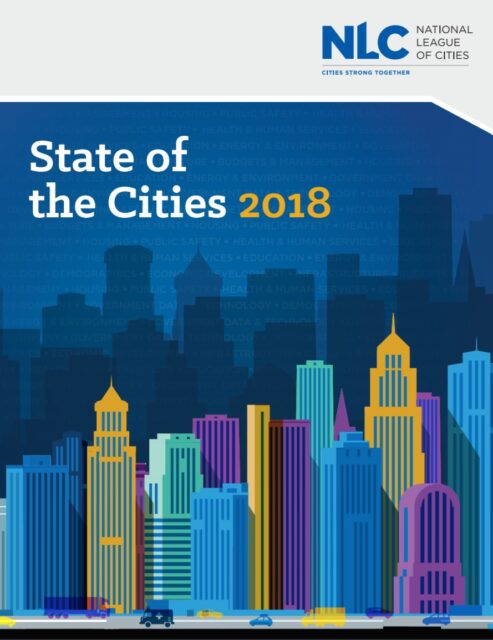Each year, mayors across the nation detail their vision for their city’s future in a seminal address—their state of the city speech. These speeches have taken on new significance as mayors emerge as focal points in the intergovernmental context. While many state and federal partners are mired in political gridlock or actively disinvesting in cities, mayors consistently demonstrate the capacity and willingness to solve complex problems that are shaped by local realities and have broad national implications.
Given the current environment, how do mayors perceive their role? Which issues are most important now, compared to the past? How are city leaders preparing to meet their goals?
Now in its 5th year, the National League of Cities’ annual State of the Cities report provides an in-depth analysis of mayoral speeches. The analysis pinpoints specific tactics and policies, as well as broader policy directions, and finds that:
- Economic development is the most prevalent major policy issue across mayoral speeches (58%) and has been for the past 5 years.
- Infrastructure, budgets and housing rise in importance this year, overtaking public safety. Mayors offered more detailed infrastructure plans this year, while presenting a narrower scope of discussion on public safety.
- Economic development, infrastructure, budgets, housing and public safety are consistently the top issues for the 5th year in a row.

Despite variations over time and among mayors from different types of cities, one thing that this analysis makes clear is that mayors are inherently problem-solvers with keen insights into how they can affect change within their communities. As a nation of cities, then, it is imperative that we elevate the voices of our city leaders.


